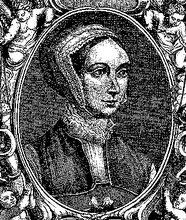
I have just finished reading Fr Peter Joseph's new edition of the "Simpson" biography of St Edmund Campion; and how much I have learned about Campion that I never knew! What a great English saint he is; how grateful to God we should be that when England was overtaken with such frenzy against the Church, there should be so many of our countrymen willing to stand with Christ for Truth. It was no passing thing that caused me to ask for Edmund Campion's name to be added to the Litany of Saints at my Ordination to the priesthood.
What I write now is not by way of a book review, but rather thoughts that were stirred in me by reading this magnificent book.
I have long thought that the fact of the English State going into schism in the sixteenth century has never been so well understood by anyone as by English Catholics themselves who lived through the Penal Days. The English Reformation is quite different to that which occured in other European States at that time. In England, it was not a question of a religious divide - such as happened in many countries - but of a citizenry who were first blugeoned and cajeoled into conforming to a new religion, and then bound, compromising the faith of an entire people. Against this culture, it became clear who those were who wished to remain Catholic, and then what steps the English State needed to take in order to persecute the Catholic Church out of existence. Whether or not 'seminary priests' who had trained abroad came back to England is of little import, the English Government was determined to totally eradicate the Church. Even so, the extensive activity of these priests witnesses to the huge numbers of ordianry English folk who wished to remain Catholic, inspite of the prejudical circumstances. Nowhere else in Europe was the Catholic Church condemned to death during the Reformation. No where else was a new religion forced upon people, not by Religious leaders, but by the State. I think that this singular state of affairs is not well understood today by many.
The new Campion biography describes the widespead incarceration of Catholics in the 1570s and 1580s by the State in specially chosen castles, notably York and Wisbech (the photo above is of the recently excavated undercroft of the site of Wisbech Castle in the Fens). Here Catholics were herded unconditionally behind bars and left to rot in hideous conditions. There is no avoiding a comparison here with the German Concentration Camps of the 1940s. Indeed, Elizabethan England was in the hands of a clique of nasty totalitarian thugs. The new biography includes many documents from the era including a letter from Fr William Allen to an Italian Cardinal, in which he says: "It is made clear to all that the question and struggle now are not about religion - of which our enemies have none - but about the stability of the empire, and about worldly prosperity." (p249) What took place in the English Reformation was first and foremost the sudden rise of old-fashioned paganism, which demanded the death of the Church, and secondly the fabrication of a new State religion, in which context the State manipulated religious controversy. In the midst of this, the ordinary citizens of England had to get on with their normal lives; only now, the very heart of life had been scoured out. Full participation in the Mystery of Christ was no longer available; life had been changed. Apart from the fact that today the Catholic Church is allowed to be present in England, for the rest, the change which the 'Elizabethan Settlement' exacted is normal life.
Today, Christian Unity, the union of the Anglican Communion with the Church, is symbolic of the call to a much deeper reconciliation. The extraordinary witness of St Edmund Campion and the other martyrs is a sign of the profound reconciliation to Christ himself which England is called to. In other words, the Catholic Church does not look for an apology for the way Catholics were treated in the sixteenth century, nor does the Catholic Church seek to be embraced by today's English Establishment. No, the very culture of England today shows us all what is needed - the whole country needs to be reconciled to Christ and to know His embrace.
Having said this, the visit and message of the Holy Father to the UK last month, not only contrasts with England's history, but makes clear her true goal - full participation in the Mystery of Christ.



























